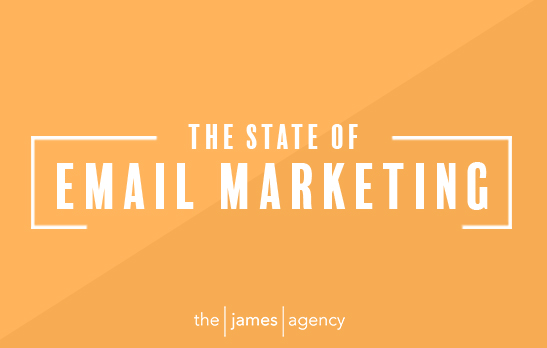It’s almost 2018. Should I still be focusing on Email Marketing?
With the prominence of social media, pay-per-click advertising and websites, is email marketing still a thing? The increase of social media caused many to predict the end of email marketing; however, that has not been the case. Email marketing is stronger than ever with roughly 5 billion active emails worldwide and roughly 269 billion emails sent and received each day in 2017.
How to create successful email campaign?
Step 1: Review historical data
It is essential to analyze all available data before creating a new email strategy. If you have existing email data, review your campaign results and pay close attention to open rates, click-through rates and unsubscribe rates. This will give you a good idea of the overall list health and provide you a benchmark to compare future emails against. If you don’t have prior campaign data or don’t know if your data shows a healthy or unhealthy list, use the resources below as a reference.
Resources:
How to Interrupt Your Email Reports
Step 2: Define your audience
This step is a combination of determining your current audience (if you have an existing list) and your ideal target audience. Utilize your customer demographics and interests to research what else they may be doing online. For example, if you are selling bowling balls, check out other blogs on bowling and sporting website where people who buy bowling equipment frequent. See what messaging is on those sites to help determine the right way to talk to your customer.
Step 3: Develop a strategy
After reviewing the past data, and determining your audience, the next step is to develop a strategic approach to email. Your strategy should not be a stand-alone plan that is separate from all marketing efforts. Instead, it should be one piece of your full online marketing puzzle. Start with determining your email goals. What do you want your emails to do? Some emails can be general to create brand awareness, announce new products, sell your company’s services or invite people to events. If you have multiple goals you may need to separate your emails to each accomplish different goals. After you have defined your goals, ensure your company objectives align with what the email recipients are interested. An email will not be successful if it is sent to accomplish a company mission and does not align with what your customers want to hear. Make sure you are providing content your email audience finds valuable and engaging. If you send the wrong message to your audience or appear too self-serving, they are likely to leave your list.
Step 4: Plan your content
Now that you’ve determined who your customer is and have a comprehensive email strategy in place, it’s time to figure out how to speak to them. Each type of email can have a different content strategy. For example, if you have a conversion goal like to “buy this bowling ball”, having one focused call to action will help increase the chances of them purchasing the bowling ball. With conversion emails and high intent customers, avoid having multiple messages and calls to action. Don’t have a lot of copy and links to other webpages and sites when you just want them to click the purchase button. Not all emails are conversion emails though. It is a valid content strategy to have a goal of educating your customers on your bowling ball foundation and want the customer to go to the website or social media channels to learn more. Every email should have a measurable digital action. That way you can monitor your email analytics to you know what’s working and what’s not.
Step 5: Write a compelling subject line and preheader text
An email subject line is the main determining factor on whether or not an email will be opened. It is important to have an enticing subject line. Avoid common SPAM phrases and characters to ensure your email makes it to your customer’s inbox. And never forget the preheader text. The preheader text is the first line of copy that shows in your inbox with the subject line. This can help convince your customer to open the email and provide more context about what they’ll find inside.
Step 6: Design
Don’t underestimate the importance of good design. The color, layout and headline all play into the success of your campaign. To make the content easy to digest, keep the design simple. Ensure that the look of your design is on brand and consistent with the style of other marketing efforts for a cohesive marketing strategy. Each email should contain a clear call to action, such as a button or call tracking number, to monitor the overall success of the email. Lastly, engaging imagery often keeps the audience’s attention and increase clicks.
Step 7: Coding
Now, on to the technical side of things. The development of emails is extremely important when executing your strategy. Emails can look completely different depending on what program they’re opened in. For example, an email opened in Apple mail may have all the text be centered and the same email opened in Outlook 2016 may have all the text left aligned. It will also look different on your desktop versus your phone. Each coded email should be tested on multiple desktop and mobile email clients before sending. At TJA, we test all emails in more than 70 different programs to make sure everyone will receive the email in it’s intended form.
Step 8: Send it!
After your email has been fully tested and reviewed, it is time to hit send. With a new or old list, you should set up A/B tests. These are experimental campaigns to determine when the email has the best results. One effective way to do an A/B test is to try different sending days and times to find the optimal time for your customers. To find these peak times, send an email to half of your email list, and then send to the other half at a different time. Based on email reporting, you can tell which email had a higher click-through rate and if there is a time or day that performs better. Other common A/B tests include different subject lines, button text, images and messaging.
Step 9: Results
After an email is sent, it is important to look at campaign analytics to learn what was successful. After 72 hours, analytics give us a clear look at how the campaign was received. We review at open rate, click-through rate and unsubscribe rate. By doing this, you’ll gain a better idea of how to optimize future emails.
Email marketing in the future
The future of email marketing is bright. When executed correctly, email campaigns can be extremely beneficial for any company. There are many platforms that you can use to streamline this process such as MailChimp, HubSpot, Constant Contact, and Fishbowl.




